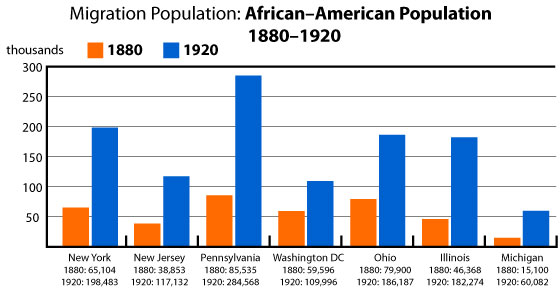Northern Migration
The influx of immigrants to the country drastically increased the population of the United States, but in-country migration also increased the number of people in Northern cities. In 1880 the number of African Americans in Michigan was 15,100. By 1920 the number had grown to 60,082. The number of African Americans in Illinois grew from 46,368 to 182,274.
Former enslaved people left the Jim Crow South in search of opportunity in factory towns. This was commonly called the Great Migration. The number of African Americans migrating north greatly increased during the early 1900s when many left the South seeking Northern employment opportunities vacated by soldiers leaving for World War I duty. This created African-American communities in cities such as Detroit, Chicago, St. Louis, Baltimore, Cleveland, and New York.

While some found jobs in the steel, shipbuilding, and meatpacking industries, most found jobs in the domestic industry, in roles such as busboys, elevator operators, domestic workers, and porters. African Americans were discriminated against in Northern cities, however. They could not rent apartments in certain neighborhoods and were displaced from jobs when soldiers returned home from war.
 Northern migration of African Americans |